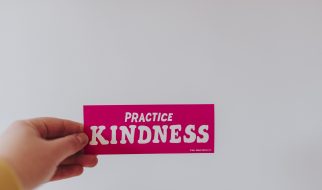I?m sure most of you have heard of ?The jar of life ? Rocks, Pebbles, and Sand? story. If you have not, here is a quick refresher.
A philosophy professor once stood before his class with a large empty jar. He filled the jar with large rocks and asked his students if the jar was full.
The students said that yes, the jar was full.
He then added small pebbles to the jar and asked again, ?Is the jar full now??
The students agreed that the jar was indeed full.
The professor then poured sand into the jar and asked again.
The students then agreed that the jar was finally full.
The professor went on to explain that the jar signifies one?s life.
The rocks are equivalent to the most important things in your life, such as family, health, and relationships. And if the pebbles and the sand were lost, the jar would still be full and your life would still have a meaning.
The pebbles represent the other things that matter in your life, such as your work, school, and house. These things often come and go, and are not permanent or essential to your overall well-being.
And finally, the sand represents the remaining small stuff and material possessions in your life. These things don?t mean much to your life as a whole and are likely only done to waste time or get small tasks accomplished.
The metaphor here is that if you start with putting sand into the jar, you will not have room for rocks or pebbles. This holds true for the things you let into your life too.
If you spend all of your time on the small and insignificant things, you will run out of room for the things that are actually important. So in order to have a more effective life, you should prioritize important things in your life and then worry about pebbles and sand at a later time.
I believed in this story. And I had actually put it into practice in my both personal and professional life too.
Another side of the story
But there is another side of the story too that no one has told you yet.
While practicing this theory for a while now I?ve realized that ? if I always try to focus on the most important things or goals in my life, then I would procrastinate the other tasks that seemed a lower priority.
But over a period, these lower priority tasks would start piling up. And the more I delayed taking care of these tasks, the more inertia it built up to complete those tasks.
The most harmful side effect of delaying lower priority tasks was, the longer the list of such lower priority tasks grew, the more stress it started adding to my daily routine.
The problem with focusing primarily on the most important things is ? since they?re the most important things in your life, they also take longer to complete and more bandwidth to accomplish. And because you?re constantly swamped up with the most important things, you would never get to the lower priority things in your life.
And at some point, I have decided to stop following this mantra of prioritizing the most important things first. On some days, I would start taking care of the lower priority tasks first. This way, as the day starts, I would check off a few things off my plate, and then in the second half of the day, I would work on the important tasks.
The benefit of taking care of a few lower priority tasks first was ? it would start building the momentum. There was a sense of achievement and progress. And that momentum would actually help me to work on the important and difficult tasks with much positive mindset.
So instead of following the rocks, pebbles, and sand story blindly as it was told, I would recommend to modify it a bit where instead of filling the jar with only rocks first, and then pebble, etc., you could fill it with few rocks, then few pebbles, then some sand, and then again few more rocks, pebbles and more sand. This way you?re making balanced progress in all areas.
Another approach you can consider is ? at the macro level (monthly or annual), prioritize the most important things, but at the micro level (daily or weekly), keep it flexible as per the situation and needs at that time.
? If you enjoyed this story, then please ? below to help others discover it too!

